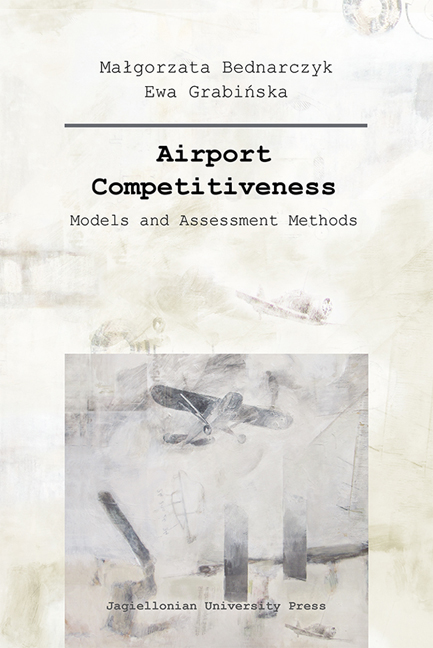Book contents
- Frontmatter
- Contents
- List of Common Abbreviations
- Dedication
- Introduction
- 1 The Essence of Air Transport and its Socio-Economic Role
- 2 Significance of Competitiveness in Air Transportation
- 3 Foundations for Assessing Competitiveness of an Airport
- 4 External and Internal Determinants of Regional Airport Competitiveness
- 5 Competitiveness Model of a Regional Airport
- Conclusions
- List of Tables and Figures, Drawings and Graphs
- Literature
- Appendix
- List of Graphs and Tables in the Appendix
1 - The Essence of Air Transport and its Socio-Economic Role
Published online by Cambridge University Press: 10 January 2018
- Frontmatter
- Contents
- List of Common Abbreviations
- Dedication
- Introduction
- 1 The Essence of Air Transport and its Socio-Economic Role
- 2 Significance of Competitiveness in Air Transportation
- 3 Foundations for Assessing Competitiveness of an Airport
- 4 External and Internal Determinants of Regional Airport Competitiveness
- 5 Competitiveness Model of a Regional Airport
- Conclusions
- List of Tables and Figures, Drawings and Graphs
- Literature
- Appendix
- List of Graphs and Tables in the Appendix
Summary
The issue of competitiveness has only become essential for Polish airports relatively recently, as a result of on-going political and economic transformation. The transformation enabled the shift from central government control to market regulation. Prior to exploration of competitiveness, we need to define the characteristics of air transport, and introduce the object of the research, namely the regional airport. Furthermore, we need to present the context of Polish regional airports development in relation to global air transport.
The essence of transport and its types
Transport itself is an activity, which aims to move something or someone from one place to another, over a distance, or to carry out a shipment. The term originates from the Latin word transportare (to carry, shift, move). In accordance with the meaning of the word, transport is a shift (movement) from a starting point to a destination point. Economically speaking, the activity is a payable service provision that results in the movement of people and cargo, as well as the creation of auxiliary services that are directly connected thereto.
Transport services constitute an intensifying factor for economic and social development in every nation. Transport development tends to diminish the distance between markets, and it makes way for an increase in production. Moreover, it activates areas around the infrastructure, which, as a result, helps to increase employment. Transport facilitates the processes of industrialisation and urbanisation. Apart from servicing material production sectors, it also serves nonproduction sectors, such as health protection and education. Furthermore, it works for the populace by fulfilling their individual transport needs. In addition, it activates both socio-economic and cultural life, and it facilitates tourism growth.
It is assumed that the development of transport is impossible without economic growth, and vice versa: economic growth is impossible without transport development. Therefore, a strong connection exists between the development of both, which bears the characteristics of mutual growth. Currently, it is not possible to substitute transport with any other activity. It is thus impossible to reach rapid economic growth without a well-developed transport infrastructure. It is a civilisational necessity. The development of transport infrastructure (both the modernisation of existing infrastructure and the building of new infrastructure) is a catalyst for change, which results in a positive domino effect. The development of transport should take place in connection with other sectoral programmes.
- Type
- Chapter
- Information
- Airport CompetitivnessModels and Assessment Methods, pp. 17 - 34Publisher: Jagiellonian University PressPrint publication year: 2015

